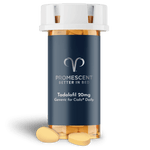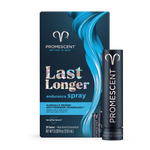Penis friction burns can be uncomfortable and can cause the penis to become red and inflamed. There are a variety of actions that can be taken to treat and prevent the condition.

reviews


reviews

Sex and masturbation are both healthy activities, but they can sometimes lead to a friction burn on the penis.
Also known as a rug burn, this condition causes the penis to become inflamed, red in color, and painful or itchy.
While a penis friction burn can be highly uncomfortable, there are ways you can treat the symptoms at home and easily prevent them from happening again.
If you experience penis friction burn symptoms but have not engaged in sex or masturbation, then it could be something else.
It is caused by the repetitive motion of masturbation or intercourse without proper lubrication.
Take a break from sex and masturbation for a few days. Also, try using aloe vera to soothe the burn.
You should see a doctor if the problem persists longer than a week or if you are bleeding or see any bruising.
A friction burn on the penis is often very uncomfortable and even painful, but it’s generally not a medical emergency or dangerous.
Similar to a rug burn, a penile friction burn is usually caused by repeatedly rubbing against the penis without adequate lubrication.
This friction, whether it’s from a hand, vagina, or anus, can create enough heat to cause a burn and abrasions on the shaft and head of the penis, as well as on the vagina and anus.
Often from dry and rough masturbation or intercourse, a penis friction burn can leave the area red, sore, and aching for around a week or longer.
In some cases, the penis may even have micro tears or a small amount of bleeding if the friction is severe enough.
These are some of the common signs of penile friction burns:
If there are signs of discharge, interior burning or pain, or any urination issues, it's likely from something else.
If symptoms of a penis friction burn appear without any related activity, such as prolonged intercourse or rough masturbation, it may be a sign of an unrelated problem.
Some genital allergies or infections may initially appear like a friction burn on the penis, and the initial symptoms can look strikingly similar.
However, these afflictions usually include additional symptoms like:
You should talk to your doctor if you experience any of the above symptoms.
A friction burn on the penis will often appear throughout the shaft and along the head since it’s often related to masturbation or intercourse.
However, if the symptoms are only on the head, it may be a sign of balanitis.
Balanitis is similar to a rug burn since it can be caused by rough contact or rubbing, except it's only a friction burn on the penis head and not the shaft.
Some common balanitis symptoms include:
While balanitis can come from friction, it can also come from sweat, an overly tight foreskin, or yeast infections.
Many STIs may begin with similar symptoms to a friction burn, but some key differences can rule out a friction burn.
STIs usually have more symptoms beyond just itchiness, including open sores, discharge, or pain when urinating, among other symptoms.
Some STIs to be aware of include:
Friction burns on the penis are caused by the heat created by repetitive or rough movements on unlubricated skin.
If, during sex or masturbation, you feel any pain or discomfort, it’s important to stop and rest before continuing.
Using a skin-friendly lubricant can help to reduce the risk of a penis friction burn.
The most popular lubricants are often made from water or silicone, and both offer enough gliding action to increase comfort and minimize friction.
Some Promescent lubricants also contain Aloe Vera, among other soothing ingredients, to help to prevent abrasions and burns.
Learning how to treat rug burn penis is easy, and it’s something you can do at home right away.
The most important treatment for a friction burn on the penis is simply time.
If you’re wondering, “how long do friction burns last,” luckily, it’s only about seven days on average, making it a relatively short experience.
Plus, most friction burns heal on their own and don’t cause any long-term damage or discomfort.
You can do some simple things to help promote healing and reduce discomfort:
Both masturbation and intercourse can disrupt the healing process and even cause the burn to get worse.
As the friction burn begins to heal, you may notice some minor peeling or flaking.
This is completely normal, and it’s a sign that your skin is healing.
A light moisturizer should help to minimize any discomfort during this final stage.
Treating a penis friction burn at home is fairly simple and usually won’t require a doctor’s visit.
A friction burn hurts and is uncomfortable, but it’s generally not debilitating. However, there are some signs that you should seek professional help, such as:
If you experience anything that feels out of the ordinary or higher in pain than you'd expect from a rug burn, then it's better to be safe and get a professional's opinion.
Likewise, any sign that it’s more than a friction burn warrants a trip to the doctor’s office.
Some signs include:
A penis friction burn is uncomfortable but, luckily, not dangerous.
Most penis friction burns heal naturally within a week by simply resting the area and letting it heal.
Loose or soft clothing, along with aloe vera gel, can also aid in recovery.
To avoid penis rug burns in the future, always use skin-friendly lubrication to prevent friction and damage during sex or masturbation.
Dr. Jed Kaminetsky M.D. is an American Board Certified Urologist and earned his Medical Degree at New York University. In his tenure he became a member of the American Urological Association and the American College of Surgeons. Dr. Kaminetsky pioneered the minimally invasive Rezum BPH treatment and is an expert in male and female dysfunction.
Absorption Pharmaceuticals LLC (Promescent) has strict informational citing guidelines and relies on peer-reviewed studies, academic or research institutions, medical associations, and medical experts. We attempt to use primary sources and refrain from using tertiary references and only citing trustworthy sources. Each article is reviewed, written, and updated by Medical Professionals or authoritative Experts in a specific, related field of practice. You can find out more about how we ensure our content is accurate and current by reading our editorial policy.
Agrawal A, Raibagkar SC, Vora HJ. Friction burns: epidemiology and prevention. Ann Burns Fire Disasters. 2008 Mar 31;21(1):3-6. PMID: 21991101; PMCID: PMC3188131. Accessed October 3rd 2022.
Marfatia YS, Patel D, Menon DS, Naswa S. Genital contact allergy: A diagnosis missed. Indian J Sex Transm Dis AIDS. 2016 Jan-Jun;37(1):1-6. doi: 10.4103/0253-7184.180286. PMID: 27190404; PMCID: PMC4857673. Accessed October 3rd 2022.
Wray AA, Velasquez J, Khetarpal S. Balanitis. [Updated 2022 Jul 4]. In: StatPearls [Internet]. Treasure Island (FL): StatPearls Publishing; 2022 Jan-. Available from: https://www.ncbi.nlm.nih.gov/books/NBK537143/. Accessed October 3rd 2022.
Garcia MR, Wray AA. Sexually Transmitted Infections. [Updated 2022 Jul 11]. In: StatPearls [Internet]. Treasure Island (FL): StatPearls Publishing; 2022 Jan-. Available from: https://www.ncbi.nlm.nih.gov/books/NBK560808/. Accessed October 3rd 2022.

Generic Cialis®
reviews
Save up to 92% when you choose the generic version of Viagra® or Cialis® versus brand-name pills.
Save up to 92%
reviews
Your Cart Is Empty